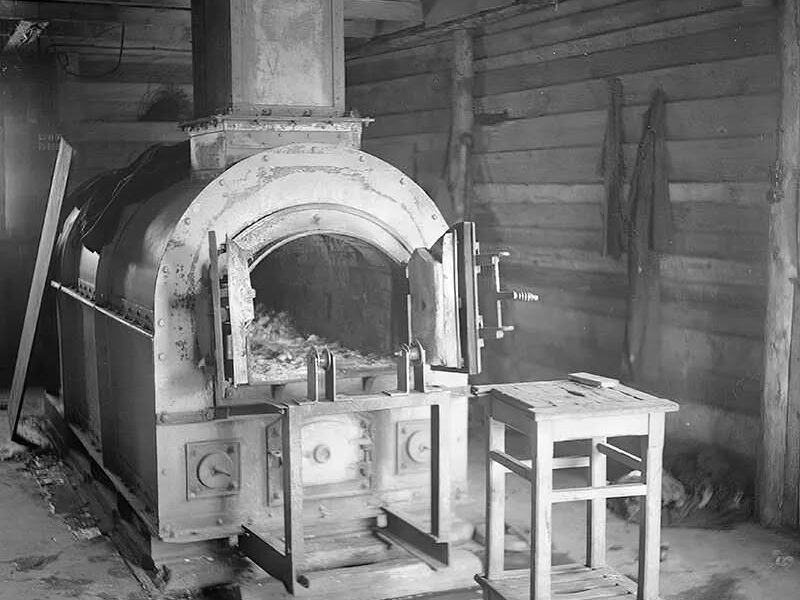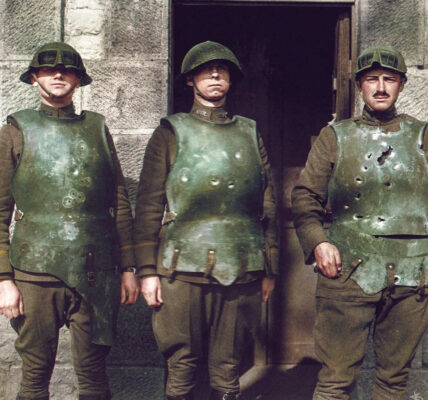 The term “banality of evil,” introduced by political scientist Hannah Arendt, expresses the disturbing idea that ordinary people can commit cruel acts.
The term “banality of evil,” introduced by political scientist Hannah Arendt, expresses the disturbing idea that ordinary people can commit cruel acts.
The portraits of the Bergen-Belsen camp guards vividly illustrate this concept.
Despite their banal and unremarkable appearance in photographs, these individuals played a key role in carrying out the genocide and highlighted the horrifying reality of how ordinary people can become tools of evil.

View of the camp after liberation.
Bergen-Belsen was a Nazi German concentration camp located near the villages of Bergen and Belsen, about 16 km northwest of Celle, Germany.
Established in 1943, the camp was originally intended as an internment camp for Jews who were to be exchanged for Germans held in Allied territory. It was built on part of an existing prisoner of war camp.
Bergen-Belsen consisted of five subcamps: a prison camp, a special camp for Jews with papers from South American countries, a “Star Camp” in which the prisoners wore yellow Stars of David but no uniforms and were intended for exchange with the West, a camp for Jews with citizenship papers from neutral countries, and a camp for Hungarian Jews.

Wilhelm Dorr, sentenced to death.
According to current estimates, around 120,000 prisoners passed through the Bergen-Belsen concentration camp during its operation from 1943 to 1945.
Due to the destruction of camp records by the SS, only about 55,000 of these people are known by name.
The conditions and treatment of prisoners varied considerably between different parts of the camp.
The prisoners in the exchange camp were generally treated better than the prisoners in other sections, especially in the early days.

Franz Stöfel, sentenced to death.
There were no gas chambers in Bergen-Belsen because mass executions were carried out in other camps.
However, conditions in Bergen-Belsen deteriorated dramatically after the death marches in the winter of 1945 – the forced evacuation of prisoners from concentration and extermination camps in the East.
The camp was originally designed to accommodate around 10,000 prisoners, but by the end of the war its capacity had increased to around 60,000 due to the influx of Jewish prisoners evacuated from Auschwitz and other camps in the east.
These newly arrived prisoners faced an acute shortage of food and shelter.

Erich Zoddel, sentenced to life imprisonment.
From January to mid-April 1945, more than 35,000 people died in Bergen-Belsen from hunger, overwork, disease and a severe typhus epidemic.
The living conditions were among the most horrific in all Nazi camps and contributed to the high death toll.
Anne Frank, whose war diary later became world famous, died of typhus in Bergen-Belsen in March 1945.

Ignatz Schlomovicz, acquitted.
In the weeks following the camp’s liberation by the British Army on April 15, 1945, approximately 28,000 prisoners died of disease and other causes.
The British were forced to bury thousands of bodies in mass graves that had been hastily dug on the site.
Bergen-Belsen was the first major Nazi concentration camp to be liberated by the Western Allies, and its horrors immediately became notorious.

Ansgar Pichen, executed on December 13, 1945 for war crimes and crimes against humanity.
The scenes that unfolded before the liberating British troops were described by Richard Dimbleby of the BBC, who accompanied them:
…Here, over a hectare of land lay dead and dying people. It was impossible to tell who was who…
The living lay with their heads against the corpses, and around them moved the terrible, ghostly procession of emaciated, aimless people who had nothing to do and no hope of life, unable to avoid them, unable to contemplate the terrible sight around them…
Babies had been born here, tiny, wrinkled creatures that couldn’t live…
A mother, driven to madness, screamed at a British sentry to give her milk for her child, pressed the small child into his arms, and then ran away, crying terribly.
He opened the bundle and discovered that the baby had been dead for days. That day in Belsen was the most horrific day of my life.

Josef Kramer, known as the “Beast of Belsen,” was sentenced to death.
Many former SS members who survived the typhus epidemic in Bergen-Belsen were prosecuted by the British military as part of the Belsen Trial.
During its entire operation as a concentration camp, at least 480 people were employed at Bergen-Belsen as guards or members of the commandant’s staff, including about 45 women.

Franz Hößler, sentenced to death.
From September 17 to November 17, 1945, 45 of these people were tried before a military court in Lüneburg.
The defendants included Josef Kramer, the former camp commandant, as well as 16 other male SS members, 16 female SS guards and 12 former Kapos – one of whom fell ill during the trial.
Among them were Irma Grese, Elisabeth Volkenrath, Hertha Ehlert, Ilse Lothe, Johanna Bormann and Fritz Klein.

Oscar Schmitz, acquitted
Eleven of the defendants were sentenced to death. Among them were Kramer, Volkenrath, and Klein. The hangings took place in Hamelin on December 13, 1945.
Fourteen defendants were acquitted (one was excluded from the trial due to illness). Of the remaining 19, one was sentenced to life imprisonment but executed for a different crime.
Eighteen were sentenced to prison terms of between one and 15 years. However, most of these sentences were later significantly reduced following appeals or requests for clemency.
In June 1955, the last people convicted in the Belsen trial were released.
Ten other members of the Belsen staff were tried by military courts in 1946 and 1948; five of them were executed.

Dr. Fritz Klein. He was found guilty of war crimes and crimes against humanity, sentenced to death, and hanged along with the rest of the camp staff in December 1945.

Vladislav Ostrovski, sentenced to life imprisonment.

Josef Kramer, photographed in leg irons at Belsen before being taken to the prisoner of war cage in Celle, April 17, 1945.

Bergen-Belsen crematorium in April 1945.

Surviving women in Bergen-Belsen, April 1945.

A crowd watches the destruction of the last camp hut.



